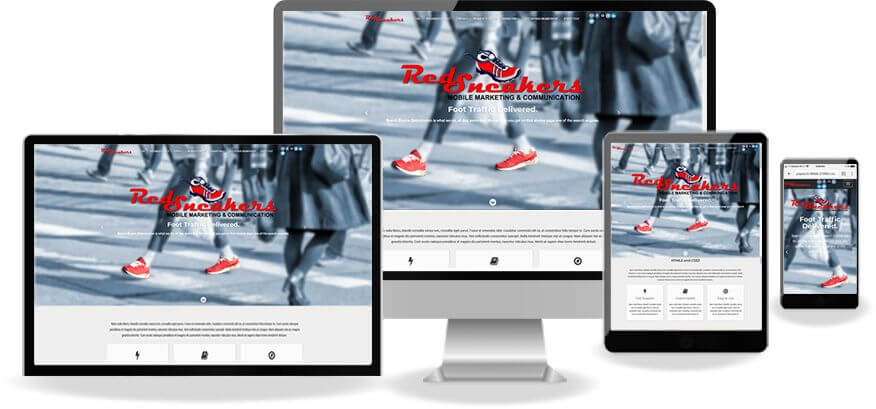Web Design: 2020 Checklist to Protecting Rankings During a Website Build
Dec 6, 2019 -- Posted by : Every website needs to go through a redesign at some point. Today's Internet crowd is savvy, sleek and needs to have everything they want at their fingertips quickly and seamlessly.
Every website needs to go through a redesign at some point. Today's Internet crowd is savvy, sleek and needs to have everything they want at their fingertips quickly and seamlessly.
Depending on the amount of planning you and your team put into the process, it can either be a relatively painless endeavor or a gut wrenching nightmare costing your company thousands of dollars or more in downtime, lost rankings, or other issues.
Consider this article direct research from the school of hard knocks that our staff and members have learned through experience. Over the years, the following tips have surfaced as things you need to think about before, during and after a website redesign. No one is perfect and even the best plans can have holes in them. Do yourself a favor - learn from our mistakes and use the following 4-step process to greatly improve your odds of getting through this process unscathed.
Step 1. Get Baseline Snapshots & Site Backup
Prior to launching your new website, we recommend doing some baseline reports, to note how much improvement your new site is over the previous design. We've found quite often this data is impossible to get weeks or months after a site launches, making it difficult to chart improvements - or the lack of them. Consider making reports on the following...
- Load Time.
- Conversion Rates.
- Current High Traffic Pages.
- Up to date Search Engine Rankings.
- For the remaindering 6 items, sign up to our SEO blog.
Step 2. Before Launch Preparations
Now that we have our baselines and backups ready, we can start the transition.
- Do you have a game plan to put the old site back up immediately should there be a major issue with the new one? If not, make one and be ready to execute it.
- Keep the same URL structure if possible. Directory names, file names, and file extensions should be exactly the same if possible for minimal Search Engine impact.
- Will email accounts or servers be changing during the upgrade? - Do NOT over look what might happen with email accounts during a major redesign - especially if you're moving to a different server. Make sure the businesses email account users are informed about what steps to take to reconfigure SMTP/POP3/IMAP settings if necessary and make it as painless as possible for them to reconfigure their access.
- Look for Hidden Content - There are often URL's that won't show up in a site scan, such as form confirmation pages, ad landing pages, email reply text files and other not so visible content that may need to be updated. Look for these URLs, and discuss with the team if possible.
- On & Off Site Landing Pages - Will the site redesign affect external inbound traffic to landing pages, thank you pages, shopping cart confirmation pages etc.? Sometimes website content is replicated off site, it may need to be updated to the new design as well.
- If keeping the previous URL structure is not possible, have a game plan on how you will handle the switch in file structure and have it ready to launch at the same time the new site goes live. This would include 301 server redirects, updating off-site links, updating marketing materials, updating PPC ads, etc.
- Use a spider/link-checker such as SEO-Checker.tools.This tool will start at the URL you enter, such as your home page and follow links that it discovers - so you can start it in a development subdirectory. It's a great way to catch typos in your menu URLs and other on-site links.
- Review titles and meta descriptions on the new site. New sites often have screwed up or missing titles.
- All web forms and other interactive scripts on the site. Verify they send email where they are supposed to and/or function correctly. Are the email confirmation messages correct?
- Test the load time on the new site - is it similar to or faster than the old site? Remember Google has said page load time is an important (we believe small) part of the ranking algorithm.
- Have a plan for adding your current analytics tracking code before launch to all your pages. However, this should be your last step so your testing isn't corrupting your live site stats while testing the new site.
- Switching to HTTPS during the update - Make certain to create a new profile for the site with Google Search Console using the HTTPS version.
- For the remaindering 6 steps, sign up to our SEO blog.
Step 3. Launch Time...It's Go Time, Are You Ready?
Hopefully you've done your homework and you're ready to flip the switch on the new site. Here are a few notes to consider at this crucial time...
- Do you have a good back up of the old site? It can't hurt to double check your backup and make sure you're ready to switch the site back to the old version if something goes wrong!
- Be sure to update .htaccess and robots.txt files as needed for the new site, so that any 301 redirects or other features will work.
- Update AdWords and other PPC campaigns, you don't want to kill your quality score by sending people to broken pages.
- If your IP address changed for the server - did you update payment gateways or other important sites that have an IP or domain name tracker to validate submissions from your site?
- For the remaindering 5 steps, sign up to our SEO blog
Step 4. Post Launch, How to Catch Any Remaining Tidbits
You're almost ready to kick back and enjoy the new site, but don't get too comfy yet. There are still a huge number of potential errors lurking in the background. The ones that will have the CEO calling you in from your kid's softball game to fix!
- Run a link spider again, such as SEO SkyBox Suite, to find any broken links, redirects, insecure links and links to the dev site that you might have missed. Review the reports generated and fix where needed.
- Double check that you put your tracking code/scripts on your new site's pages.
- Are your PPC ads still correct? Linking to correct landing pages? It can be vitally important to review your conversion rates, CTR data and other metrics for PPC after relaunching your site to find problems before it costs your company a bundle. Better to do this very soon after launch, rather than waiting a week!
- XML sitemap - be sure it's up to date with any new or updated URLs and dates then resubmit it - Or, if you've created a new profile for the site in Google Webmaster Tools, submit the new site map to that account (not the old previous profile). You can test the XML sitemap prior to submitting, which is a good idea. Come back the next day and double check the submission later to make sure the engines didn't find any errors in the sitemap file.
- Check your stats to see how the new site is doing with bounce rates.
- Ranking reports won't matter a lot until the search engines have done a deep index of the new site. This can take days or even as long as a month before they decide to reindex the site. However your home page will likely get reindexed quickly, so start paying attention to how newly reindexed pages are ranking.
- At the minimum, manually test as much of the site as possible with the most current MS Edge, Firefox, and Chrome browsers. Ideally, you would test with all major browsers, including mobile and tablet browsers.
- Manually test every Web form and other interactive scripts on the site. Verify they send their email or function the way intended. Review all emails these scripts send to make certain links within those emails are still functioning correctly and they are sending emails to the correct addresses.
So now that you are armed with this set of checklists, you should feel confident in your upcoming site switch. As with the old carpenter adage of "measure twice, cut once" goes double! Triple check each of these steps for the smoothest transition possible.
"Good fortune is what happens when opportunity meets with planning."
- Thomas Edison
Here's to your good fortune ;)
- Ed Moore, SEO Coach ![]()
Recent Posts



